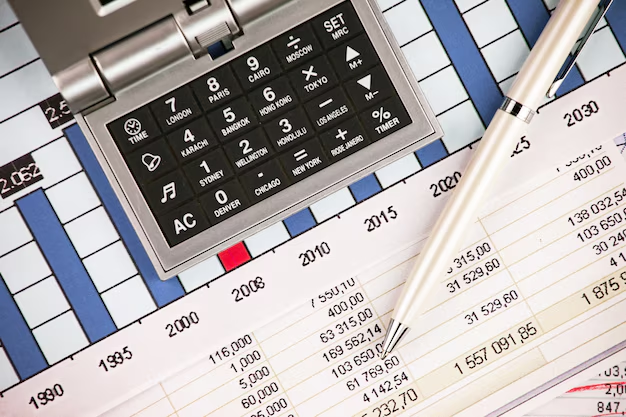Understanding EBITDA Margin: A Comprehensive Guide for Business Insights
Navigating the complexities of financial metrics can often feel daunting, particularly when faced with terms like EBITDA and EBITDA margin. However, these metrics are crucial for anyone seeking to evaluate a company's financial health and operational efficiency. Whether you're an investor, business owner, or financial analyst, understanding how to calculate the EBITDA margin and interpreting its significance can offer deep insights into a company's profitability and overall performance. In this comprehensive guide, we will break down the concept of EBITDA margin, how to calculate it, and explore the various facets that add depth and practical value to your financial analysis.
What is EBITDA?
At its core, EBITDA stands for Earnings Before Interest, Taxes, Depreciation, and Amortization. It is a financial metric used to assess a company's operating performance without the impact of financial and accounting decisions. By excluding interest, taxes, depreciation, and amortization, EBITDA provides a clearer view of the profitability that arises purely from operations. This makes it particularly useful for comparing companies within the same industry, as it offers a standardized frame of reference.
Why Focus on EBITDA?
EBITDA is valuable because it focuses on the essentials of business performance, stripping away variables that could distort profitability comparisons. This is vital for:
- Investors looking to evaluate businesses with different financing strategies or tax environments.
- Business owners aiming to optimize operational efficiency.
- Analysts comparing companies before debt service and capital expenditures.
The Power of EBITDA Margin
While EBITDA offers a snapshot of operational performance, the EBITDA margin takes this a step further. It expresses EBITDA as a percentage of total revenue, providing insight into how much of each dollar earned is effectively contributing to operational profits.
Formula for EBITDA Margin
To calculate the EBITDA margin, the formula is straightforward:
[ ext{EBITDA Margin} = left( frac{ ext{EBITDA}}{ ext{Total Revenue}} ight) imes 100 ]
This formula helps determine the efficiency with which a company converts revenue into EBITDA.
Calculating EBITDA
To find EBITDA, follow these steps:
- Start with Net Income: The bottom line profit after all expenses, interest, and taxes.
- Add Back Interest: Remove interest expenses to focus solely on operating performance.
- Add Back Taxes: Exclude taxes as they can vary significantly due to geographical and policy variance.
- Add Depreciation and Amortization: Non-cash expenses that don't affect immediate operating cash flow.
[ ext{EBITDA} = ext{Net Income} + ext{Interest} + ext{Taxes} + ext{Depreciation} + ext{Amortization} ]
Example Calculation
Imagine a hypothetical company with the following financial data:
- Net Income: $200,000
- Interest: $30,000
- Taxes: $15,000
- Depreciation: $10,000
- Amortization: $5,000
- Total Revenue: $350,000
First, calculate EBITDA:
[ ext{EBITDA} = 200,000 + 30,000 + 15,000 + 10,000 + 5,000 = 260,000 ]
Next, calculate the EBITDA margin:
[ ext{EBITDA Margin} = left( frac{260,000}{350,000} ight) imes 100 = 74.29% ]
This means approximately 74% of the revenue is converting into operational profits before financial influences like interest and taxes, highlighting robust operating performance.
Interpreting EBITDA Margin
While calculating the EBITDA margin is crucial, interpreting it gives it actionable value. A high EBITDA margin typically signals a company possesses strong operational efficiency. However, context is vital:
- Industry Benchmarks: Different industries operate under varying levels of margins due to structural differences. Comparing across the same industry will yield more relevant insights.
- Trends Over Time: Observing how the EBITDA margin changes over time can illuminate operational improvements or declines.
- Comparative Analysis: Compare against competitors to gauge relative operational efficiency.
Broadening the Perspective: Related Metrics
EBITDA margin is not an isolated figure. It’s often evaluated alongside several related metrics for a more robust analysis.
Gross Profit Margin
This measures how efficiently a company produces and sells its goods by focusing on production costs:
[ ext{Gross Profit Margin} = left( frac{ ext{Gross Profit}}{ ext{Total Revenue}} ight) imes 100 ]
Net Profit Margin
Net profit margin considers the entire spectrum of a company's operations, interest, tax, and exceptional items, providing a comprehensive profitability picture:
[ ext{Net Profit Margin} = left( frac{ ext{Net Profit}}{ ext{Total Revenue}} ight) imes 100 ]
Operating Profit Margin
Also known as EBIT margin, this metric reflects operational efficiency excluding interest and tax, but including depreciation and amortization.
[ ext{Operating Profit Margin} = left( frac{ ext{Operating Profit}}{ ext{Total Revenue}} ight) imes 100 ]
Key Takeaways 📝
Here's a concise summary of insights into EBITDA margin for easy reference:
- EBITDA Definition: Focuses on operating performance by excluding interest, taxes, and non-cash items.
- EBITDA Margin: Measures operational efficiency as a percentage of revenue.
- Calculation Steps:
- Calculate EBITDA = Net Income + Interest + Taxes + Depreciation + Amortization
- Find EBITDA Margin = (EBITDA / Total Revenue) × 100
- Industry Context: Essential for interpreting the significance of the percentage.
- Complementary Metrics: Gross, net, and operating profit margins enrich financial analysis.
By incorporating these tips and insights into your financial evaluations, you can more effectively leverage EBITDA margins to inform strategic decisions, assess competitive standing, and enhance your understanding of operational health.
As you hone your financial acumen, remember that while EBITDA margin provides valuable insights, it’s only one component of a comprehensive financial analysis. Understanding its nuances and relationship with other metrics ensures a more complete and accurate evaluation of a company's true operational strength.
